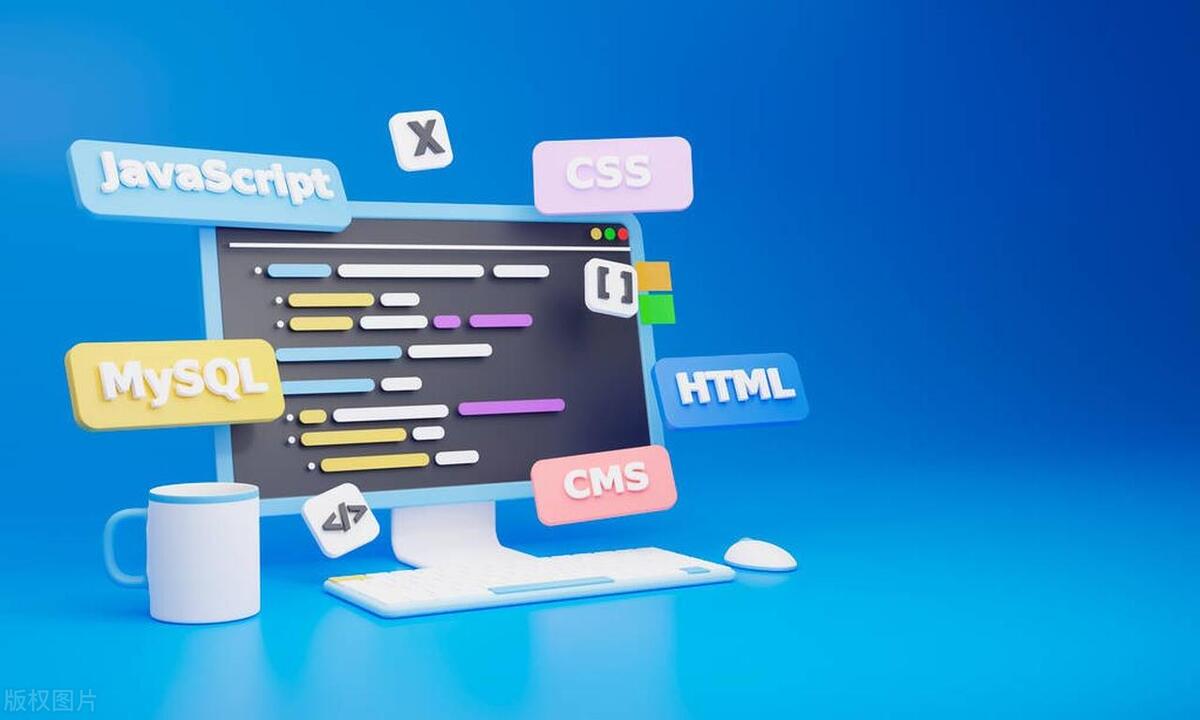Understanding the JavaScript Event Loop and Callback Queue
Aug 01, 2025 am 06:36 AMJavaScript is single-threaded but handles asynchronous operations without blocking through the Event Loop and callback queues. 1) The Call Stack executes functions in order. 2) Web APIs handle async tasks like timers and HTTP requests. 3) Completed async callbacks go to either the Macrotask Queue (e.g., setTimeout) or the Microtask Queue (e.g., Promise.then). 4) The Event Loop checks if the call stack is empty, then prioritizes microtasks over macrotasks. 5) Even with a 0ms delay, setTimeout callbacks wait until the stack and microtask queue are cleared, which is why console.log("2") in a setTimeout runs after Promise.then callbacks despite being queued earlier. This mechanism ensures non-blocking behavior while maintaining execution order predictability.

JavaScript is single-threaded, which means it can only do one thing at a time. But we all know that JavaScript can handle asynchronous operations like setTimeout, HTTP requests, and user interactions — all without freezing the browser. This magic is made possible by the Event Loop and the Callback Queue (also known as the Task Queue). Let’s break it down in simple terms.

How the Event Loop Keeps JavaScript Non-Blocking
When you run JavaScript code, it executes in a specific order. But when asynchronous operations come into play — like setTimeout or fetch — they don’t block the rest of the code. Here’s how:
- Call Stack – This is where functions are executed. It’s a stack data structure: last in, first out.
- Web APIs – These are provided by the browser (not part of JavaScript itself) and handle things like timers, HTTP requests, DOM events, etc.
-
Callback Queue (Task Queue) – When an async operation finishes (e.g., a
setTimeouttimer ends), its callback is placed here, waiting to be executed. - Event Loop – This constantly checks if the call stack is empty. If it is, it pushes the first callback from the queue onto the stack.
The key rule: The Event Loop only moves a callback from the queue to the stack when the stack is completely empty.

Example to Illustrate the Flow
console.log("1");
setTimeout(() => {
console.log("2");
}, 0);
console.log("3");You might expect this to print 1, 2, 3 — but it actually prints:
1 3 2
Here’s why:

"1"is logged immediately (call stack).setTimeoutis called — the browser starts a 0ms timer in the Web API."3"is logged next because it’s synchronous.- Only after the entire main script finishes does the Event Loop check the callback queue.
- The timer completes (almost instantly), so its callback goes to the queue.
- With the stack now empty, the Event Loop picks up the callback and logs
"2".
So even with a 0ms delay, the setTimeout callback must wait for the current execution to finish.
Microtasks vs Macrotasks: The Priority Queue
Not all callbacks are treated equally. JavaScript distinguishes between:
- Macrotasks –
setTimeout,setInterval,setImmediate, I/O, UI rendering. - Microtasks –
Promise.then/catch/finally,queueMicrotask,MutationObserver.
Microtasks have higher priority. After every macrotask, the event loop runs all microtasks before going back to the macrotask queue.
Example with Promises
console.log("1");
setTimeout(() => {
console.log("2");
}, 0);
Promise.resolve().then(() => {
console.log("3");
});
console.log("4");Output:
1 4 3 2
Why?
-
1and4log immediately. - The
Promise.thencallback goes into the microtask queue. - After the main script, the Event Loop processes all microtasks — so
3logs before2. - Then it moves to the macrotask queue and logs
2.
This priority system means microtasks can delay macrotasks, which is important for performance and predictability.
Key Takeaways
- JavaScript is single-threaded, but the browser’s Web APIs handle async operations behind the scenes.
- The Event Loop monitors the call stack and the callback queues.
- Callbacks from
setTimeout,setInterval, and similar go to the macrotask queue. - Promises and
queueMicrotaskgo to the microtask queue, which is processed before the next macrotask. - Nothing in the callback queues runs until the call stack is empty.
Understanding this flow helps explain why async code behaves the way it does — and why you can’t truly "pause" JavaScript with setTimeout(..., 0).
Basically, it’s not magic — it’s the Event Loop doing its job.
The above is the detailed content of Understanding the JavaScript Event Loop and Callback Queue. For more information, please follow other related articles on the PHP Chinese website!

Hot AI Tools

Undress AI Tool
Undress images for free

Undresser.AI Undress
AI-powered app for creating realistic nude photos

AI Clothes Remover
Online AI tool for removing clothes from photos.

Clothoff.io
AI clothes remover

Video Face Swap
Swap faces in any video effortlessly with our completely free AI face swap tool!

Hot Article

Hot Tools

Notepad++7.3.1
Easy-to-use and free code editor

SublimeText3 Chinese version
Chinese version, very easy to use

Zend Studio 13.0.1
Powerful PHP integrated development environment

Dreamweaver CS6
Visual web development tools

SublimeText3 Mac version
God-level code editing software (SublimeText3)

Hot Topics
 How does React handle focus management and accessibility?
Jul 08, 2025 am 02:34 AM
How does React handle focus management and accessibility?
Jul 08, 2025 am 02:34 AM
React itself does not directly manage focus or accessibility, but provides tools to effectively deal with these issues. 1. Use Refs to programmatically manage focus, such as setting element focus through useRef; 2. Use ARIA attributes to improve accessibility, such as defining the structure and state of tab components; 3. Pay attention to keyboard navigation to ensure that the focus logic in components such as modal boxes is clear; 4. Try to use native HTML elements to reduce the workload and error risk of custom implementation; 5. React assists accessibility by controlling the DOM and adding ARIA attributes, but the correct use still depends on developers.
 Describe the difference between shallow and full rendering in React testing.
Jul 06, 2025 am 02:32 AM
Describe the difference between shallow and full rendering in React testing.
Jul 06, 2025 am 02:32 AM
Shallowrenderingtestsacomponentinisolation,withoutchildren,whilefullrenderingincludesallchildcomponents.Shallowrenderingisgoodfortestingacomponent’sownlogicandmarkup,offeringfasterexecutionandisolationfromchildbehavior,butlacksfulllifecycleandDOMinte
 What is the significance of the StrictMode component in React?
Jul 06, 2025 am 02:33 AM
What is the significance of the StrictMode component in React?
Jul 06, 2025 am 02:33 AM
StrictMode does not render any visual content in React, but it is very useful during development. Its main function is to help developers identify potential problems, especially those that may cause bugs or unexpected behavior in complex applications. Specifically, it flags unsafe lifecycle methods, recognizes side effects in render functions, and warns about the use of old string refAPI. In addition, it can expose these side effects by intentionally repeating calls to certain functions, thereby prompting developers to move related operations to appropriate locations, such as the useEffect hook. At the same time, it encourages the use of newer ref methods such as useRef or callback ref instead of string ref. To use Stri effectively
 Vue with TypeScript Integration Guide
Jul 05, 2025 am 02:29 AM
Vue with TypeScript Integration Guide
Jul 05, 2025 am 02:29 AM
Create TypeScript-enabled projects using VueCLI or Vite, which can be quickly initialized through interactive selection features or using templates. Use tags in components to implement type inference with defineComponent, and it is recommended to explicitly declare props and emits types, and use interface or type to define complex structures. It is recommended to explicitly label types when using ref and reactive in setup functions to improve code maintainability and collaboration efficiency.
 How to handle forms in Vue
Jul 04, 2025 am 03:10 AM
How to handle forms in Vue
Jul 04, 2025 am 03:10 AM
There are three key points to be mastered when processing Vue forms: 1. Use v-model to achieve two-way binding and synchronize form data; 2. Implement verification logic to ensure input compliance; 3. Control the submission behavior and process requests and status feedback. In Vue, form elements such as input boxes, check boxes, etc. can be bound to data attributes through v-model, such as automatically synchronizing user input; for multiple selection scenarios of check boxes, the binding field should be initialized into an array to correctly store multiple selected values. Form verification can be implemented through custom functions or third-party libraries. Common practices include checking whether the field is empty, using a regular verification format, and displaying prompt information when errors are wrong; for example, writing a validateForm method to return the error message object of each field. You should use it when submitting
 Server-Side Rendering with Next.js Explained
Jul 23, 2025 am 01:39 AM
Server-Side Rendering with Next.js Explained
Jul 23, 2025 am 01:39 AM
Server-siderendering(SSR)inNext.jsgeneratesHTMLontheserverforeachrequest,improvingperformanceandSEO.1.SSRisidealfordynamiccontentthatchangesfrequently,suchasuserdashboards.2.ItusesgetServerSidePropstofetchdataperrequestandpassittothecomponent.3.UseSS
 A Deep Dive into WebAssembly (WASM) for Front-End Developers
Jul 27, 2025 am 12:32 AM
A Deep Dive into WebAssembly (WASM) for Front-End Developers
Jul 27, 2025 am 12:32 AM
WebAssembly(WASM)isagame-changerforfront-enddevelopersseekinghigh-performancewebapplications.1.WASMisabinaryinstructionformatthatrunsatnear-nativespeed,enablinglanguageslikeRust,C ,andGotoexecuteinthebrowser.2.ItcomplementsJavaScriptratherthanreplac
 What is content security policy CSP
Jul 04, 2025 am 03:21 AM
What is content security policy CSP
Jul 04, 2025 am 03:21 AM
Content Security Policy (CSP) prevents attacks such as XSS by limiting the loading source of web page resources. Its core mechanism is to set a whitelist to prevent unauthorized scripts from being executed. The steps to enable include: 1. Define the policy and clarify the allowed resource sources; 2. Add Content-Security-PolicyHTTP header to the server; 3. Use Report-Only mode to test and debug in the initial stage; 4. Continuous monitoring and optimization strategies to ensure that they do not affect normal functions. Notes include handling inline scripts, careful use of third-party resources, compatibility support, and other irreplaceable security measures.






